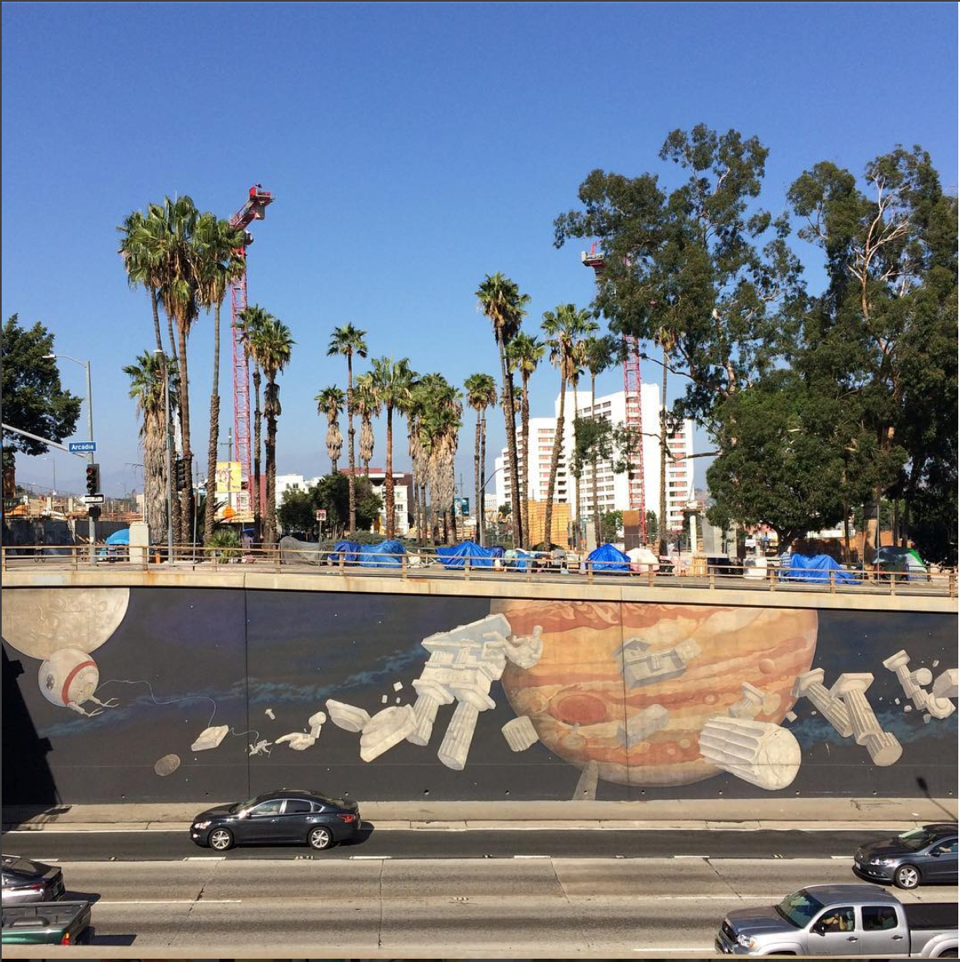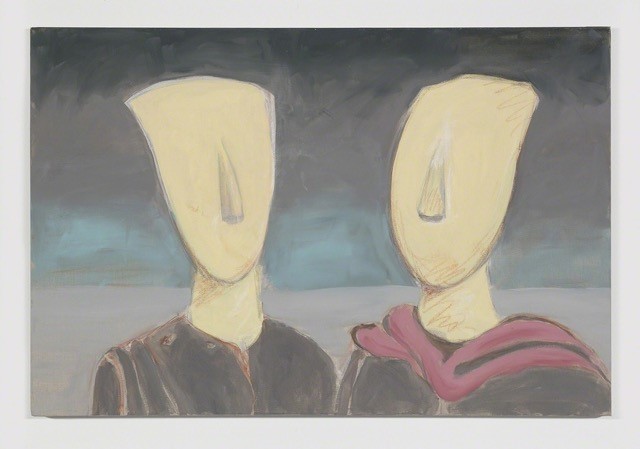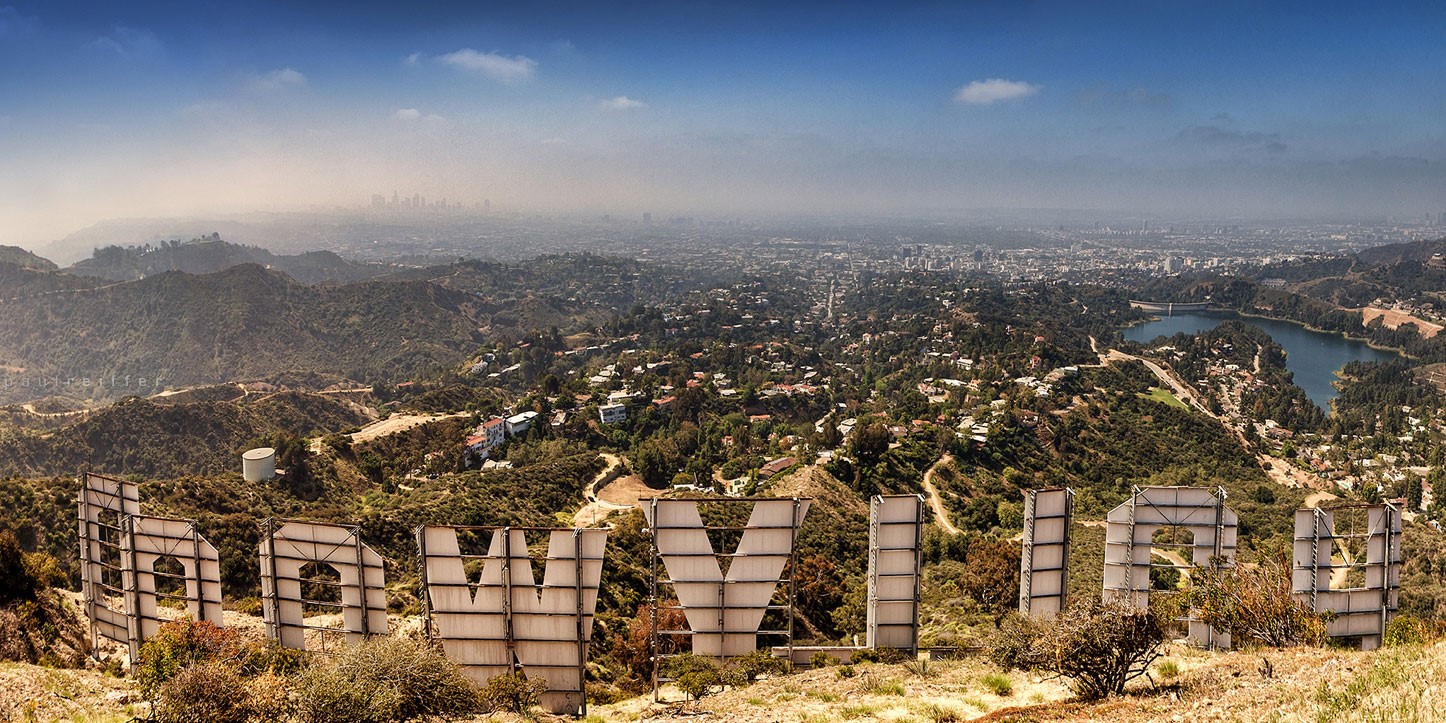Californian antiquity?
In her second blog from Los Angeles, Ruth Allen writes about a mural by John Werle and a current show on William Leavitt: Cycladic Figures…
I ended my last post on Modern Classicisms in L.A. with Adrian Villar Rojas, discussing how his Two Suns (II) (2015) gets viewers recalibrating their centre of cultural reference. The same is true of John Werle’s mural, Galileo, Jupiter, Apollo (1983), which mixes references to classical myth, Spanish history and planetary exploration. Decorating a section of the 1984 Olympic Freeway, the painting depicts fragments of classical sculpture – including the central Apollo from the west pediment of the Temple of Zeus at Olympia and the seated Dionysus from the east pediment of the Parthenon in Athens – suspended in space. The planet Jupiter looms in the background, while the satellite, Galileo, hovers to the left; a floating astronaut reaches towards a disembodied marble hand in a riff on Michelangelo’s depiction of Adam and God from the Sistine Chapel. Classical art – and perhaps all Western European history – has seemingly been blown away in favour of the space-race and the quest for modernity.
Another recent favourite show of mine has been Honor Fraser’s current exhibition, William Leavitt: Cycladic Figures. In the painting illustrated below the artist uses the motif of two Cycladic heads posed as if in conversation to explore multiplicity, storytelling and history-making. Repeated across a series of paintings, sometimes as ‘portraits’ of dressed figures, sometimes as silhouettes that form their own picture planes, filled with images of landscapes, urban settings, or architectural remains, Leavitt uses the blank space of the Cycladic heads to suggest that identity might have less to do with our exterior appearance, and more to do with our inner thoughts and imagination.
As so often in L.A., the classical is here. But in this most self-consciously modern of American cities, it is often evoked in subtle, playful and unexpected ways.



